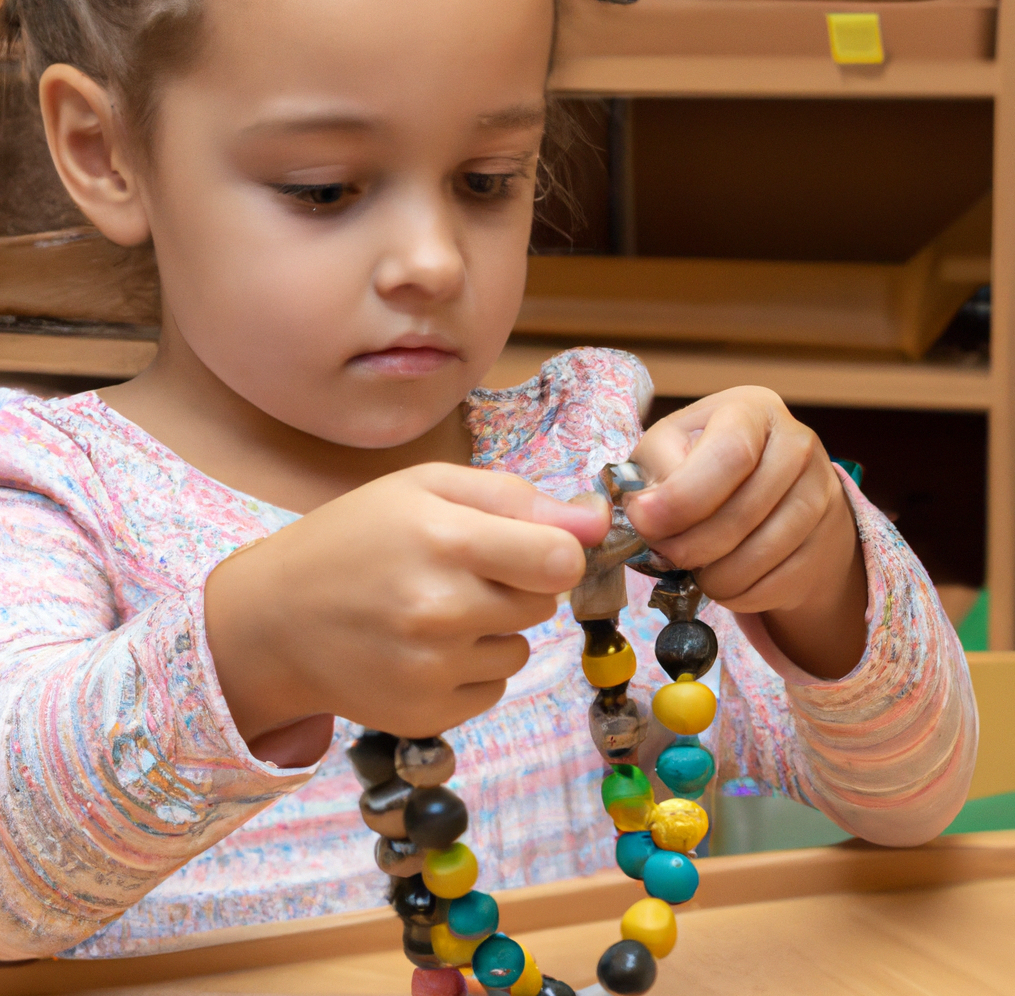Sensory Awareness: Enhancing Perception Through Mindful Practices

Sensory awareness is the conscious perception and interpretation of sensory stimuli that an individual experiences in their environment. It encompasses the ability to recognize and differentiate between the five primary senses: sight, sound, taste, touch, and smell. This awareness plays a critical role in how people interact with the world, influencing everything from basic survival to complex emotional and social behaviors.
The development of sensory awareness begins in early childhood as the brain processes sensory information that helps an individual understand and relate to their surroundings. As people grow, their sensory awareness can be honed through mindful practice and can significantly impact one’s quality of life. Enhanced sensory awareness can lead to improved attention to detail, better communication skills, and a stronger connection to oneself and others.
Understanding sensory awareness is also fundamental in various therapeutic and educational settings. Occupational therapists, for instance, work with individuals to improve their sensory integration, which can be particularly beneficial for those with sensory processing disorders. By boosting sensory awareness, individuals can achieve a greater balance and adaptability in their daily lives, navigating challenges with increased resilience and resourcefulness.
Fundamentals of Sensory Awareness
Sensory awareness refers to the conscious perception and understanding of sensory input from the environment. The human body has five primary senses: sight, hearing, touch, taste, and smell. These senses are mediated by specialized sensory organs such as the eyes, ears, skin, tongue, and nose. Each organ contains sensory receptors designed to detect specific stimuli.

Sensory Receptors
- Photoreceptors: Detect light for vision.
- Mechanoreceptors: Respond to touch, pressure, and vibration.
- Chemoreceptors: Sense chemical stimuli for taste and smell.
- Thermoreceptors: Detect changes in temperature.
- Nociceptors: Perceive pain.
Sensory Processing
The process begins when sensory receptors capture stimuli, which is then converted into neural signals. These signals travel to the brain via the nervous system. In the brain, primarily the cerebral cortex, the signals are interpreted as sensations and perceptions.
Integration is a critical aspect of sensory awareness, allowing individuals to combine sensory input to make sense of their surroundings and situations. This integration is essential for tasks such as identifying objects, navigating in space, and recognizing familiar versus new experiences.
Sensory awareness also encompasses the concept of sensory adaptation, where sensitivity to stimuli decreases with continuous exposure. This phenomenon helps individuals focus on changes in their environment that might be more critical for survival or well-being. Additionally, sensory awareness involves interoception, which is the sense of the internal state of the body, such as hunger or thirst.
Sensory awareness is integral to the human experience, enabling individuals to interact with their environment in meaningful ways. It facilitates learning, informs decision-making, and enriches personal experiences.

Types of Sensory Processing
Sensory processing refers to the way the nervous system receives messages from the senses and turns them into appropriate motor and behavioral responses.
Visual Processing
Visual processing involves the interpretation of visual information that the eyes capture. This includes distinguishing shapes, colors, and movements. Depth perception and spatial orientation are also aspects of visual processing, allowing individuals to navigate through their environment.
Auditory Processing
Auditory processing is the brain’s ability to analyze and interpret sounds. This includes understanding the location of a sound, its pitch, and its volume. Critical skills such as discriminating between sounds in noisy environments and processing speech are part of auditory processing.
Tactile Processing
Tactile processing encompasses the sense of touch, including texture, temperature, pressure, and pain. It plays a role in activities requiring fine motor skills and discriminative touch, such as feeling the difference between a key and a coin without looking.
Olfactory Processing
Olfactory processing relates to the sense of smell. It involves identifying, differentiating, and recalling smells. This is essential for tasks like detecting dangers (e.g., smoke) or enjoying flavors, as smell significantly influences taste.
Gustatory Processing
Gustatory processing refers to the perception of taste through chemical sensors in the taste buds. This includes recognizing tastes such as sweet, salty, bitter, sour, and umami. Taste preferences and aversions are also determined through gustatory processing.
Sensory Awareness in Development
Sensory awareness develops through various stages of life, each characterized by distinct milestones and challenges. This progression is crucial in shaping an individual’s perception and interaction with the world.
Early Childhood
In early childhood, sensory awareness is rapidly expanding. Infants and toddlers explore their environment primarily through their senses. They learn about the world by touching, tasting, seeing, hearing, and smelling. Sensory integration begins as they learn to process and respond to multiple sensory stimuli.
- Touch: The sense of touch develops prenatally and is refined through interactions such as holding and cuddling.
- Taste & Smell: Taste buds mature, allowing infants to distinguish between sweet, salty, sour, and bitter by the age of 6 months.
- Hearing: Newborns can recognize the voice of their mother; hearing acuity improves over the first year.
- Vision: Vision is blurry at birth but improves as they start to focus on faces and objects, with color vision developing by approximately 5 months.
- Movement & Balance: Babies learn to control their movements and balance as they progress from crawling to walking.

Adolescence
Adolescence involves further refinement of sensory awareness. Teenagers experience changes in sensory perception, partly due to hormonal influences and brain development.
- Auditory Processing: They develop a better ability to process complex sounds and distinguish subtle differences in tone and pitch.
- Visual Acuity: There is a peak in the sharpness of vision, and teens become better at visual tasks requiring depth perception and focus.
- Tactile Sensitivity: Sensitivity to touch can increase, often corresponding with heightened self-consciousness.
Adulthood
In adulthood, sensory awareness stabilizes but can be altered by lifestyle, health, and environment.
- Consistency: Adults typically have established sensory preferences and aversions, which are reflected in their routines and choices.
- Adaptation: They are adept at sensory adaptation, learning to filter out irrelevant stimuli to focus on what is important, particularly in multitasking situations.
- Decline: Progressive decline in sensory capabilities, especially in vision and hearing, may begin, though at highly individual rates.
Sensory awareness is integral at every developmental stage, enabling individuals to adapt to their ever-changing environment.
Disorders and Interventions
Disorders associated with sensory awareness can significantly impact an individual’s daily life. Effective interventions are crucial for management and improvement.
Sensory Processing Disorder
Sensory Processing Disorder (SPD) is a condition where the brain has trouble receiving and responding to information that comes in through the senses. Children and adults with SPD may over-respond to stimuli and find clothing, physical contact, light, sound, or food textures intolerable. Others may under-respond and show little or no reaction to stimulation, even pain or extreme temperatures.
Symptoms of SPD:
- Excessive sensitivity to sensory stimulation
- Unusually high or low activity levels
- Coordination problems
- Poor fine motor skills
- Delays in speech, language, or motor skills
Therapeutic Interventions
Interventions for sensory processing issues often involve occupational therapy with a sensory integration approach. Therapists use a variety of techniques and activities to help the individual respond more appropriately to sensory stimulus.
Common Strategies:
- Sensory Diet: Tailored activities that help maintain an appropriate level of arousal and regulation.
- Environmental Modifications: Creating spaces that reduce sensory overload.
- Direct Therapy: One-on-one sessions with a therapist to target specific sensory challenges.
Technological Aids
Technology offers multiple tools to assist those with sensory processing challenges. These aids can range from simple apps that help manage sensory overload to sophisticated devices that assist in communication for nonverbal individuals.
Examples of Technological Aids:
- Noise-Canceling Headphones: Reduce auditory overload in noisy environments.
- Weighted Blankets: Provide deep pressure sensation to promote calmness and reduce anxiety.
- Sensory Apps: Interactive applications tailored to help individuals self-regulate.
